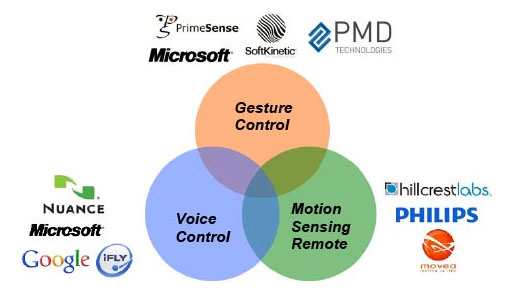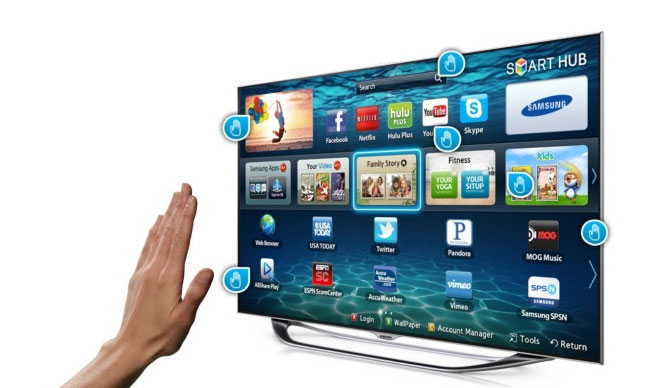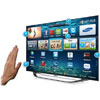TV makers are still fighting to make Smart TVs relevant but with more and more streaming services in the US, Asia and Europe the breakthrough could be nearing. But how do we control these advanced TVs? Three different technologies are in the mix and big players are betting money on all of them. Will gesture controls, motion remotes or voice control systems win?
How do we control future Smart TVs?
It is already happening. Look around in any electronics store. Samsung’s Smart TVs can be controlled with gestures or voice. LG’s Smart TVs can be controlled with a Wii-like remote. Other TV brands are still using the standard remote. A similar fight started in the smartphone arena some years ago and touch screens ultimately won against physical keyboards. The same battle for interface technologies is starting to show in the TV industry.

Do we control future Smart TVs with our hands, a motion remote, with voice controls – or a fourth method? Picture credit: Digitimes
Big players have invested in all the different control technologies and the battle is starting now
Microsoft has a foot in two camps and Samsung also focuses on two different approaches (made possible by technology supplies). TV makers are not following the same route but there seems to be a general consensus that the traditional, old remote control is obsolete.
The biggest challenge is not only to create a user-friendly TV interface but also enable users to input text on the TV screen when searching for content via streaming services. LG’s motion remote offers fairly user-friendly navigation but it does not make it much easier to input text. The same is true for gesture systems such as Microsoft’s Kinect (on Xbox 360) or Samsung’s hand gesture system. When you want to input text a voice-to-text system sounds promising but often fails in the navigation field.
The future could be a combination of the three. Just a few years ago we saw a similar fight in the smartphone category where early-entrant BlackBerry supported the physical keyboard. The touch screens ultimately won but voice controlled systems have recently made it into our smartphones as a supplement to aid users when searching or looking for specific information that often requires many steps when solved via a touch screen.

Samsung’s Smart TVs have voice and gesture controls – but the systems still need more care
Perhaps the real question is if we need a fourth option? Tablets and smartphones have potential to serve as remotes as you can navigate on the touch screen and start a movie on the big screen when you are ready to lean back. All navigational steps happen on the touch screen while the TV becomes passive and shows no menus.
Where do you see the greatest potential? How do you prefer to control your current Smart TV with a modern interface technology?
- Sources: Digitimes paid content, thanks to Johnny Olesen
 How do we control Smart TVs in the future?">
How do we control Smart TVs in the future?">
